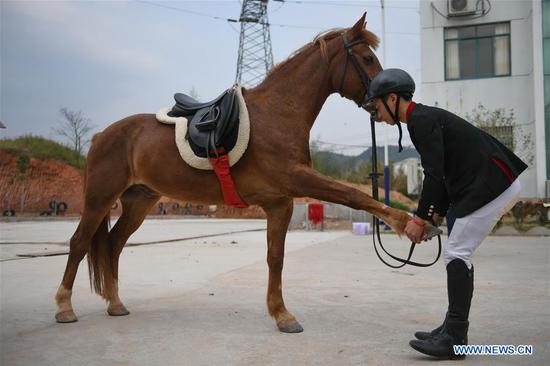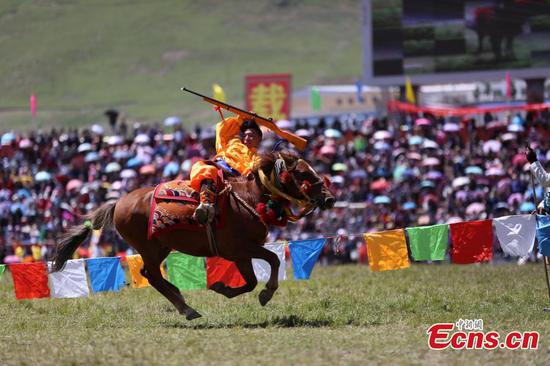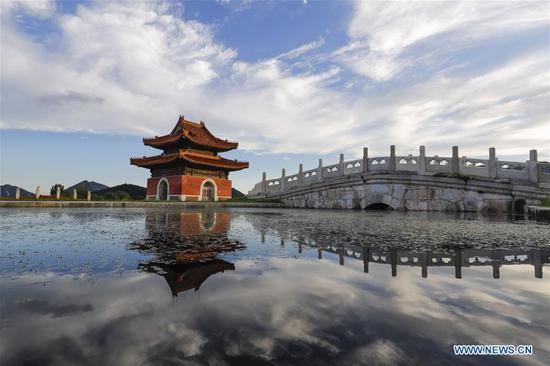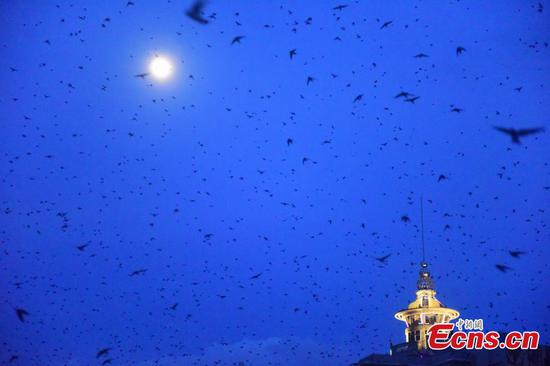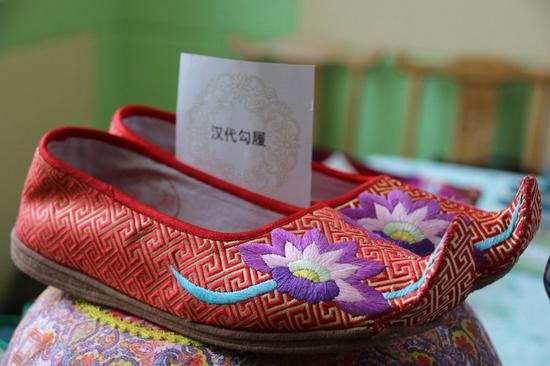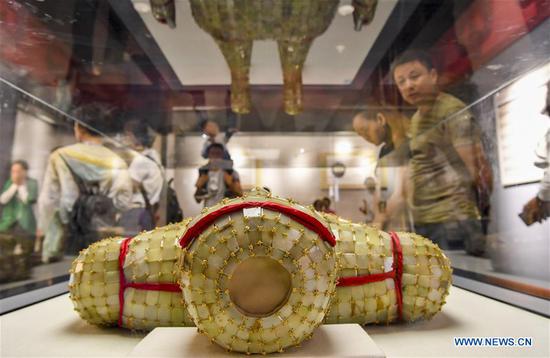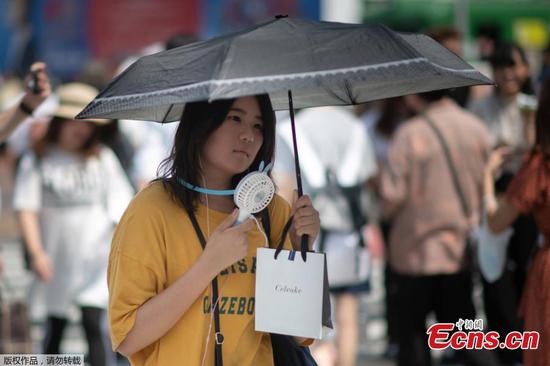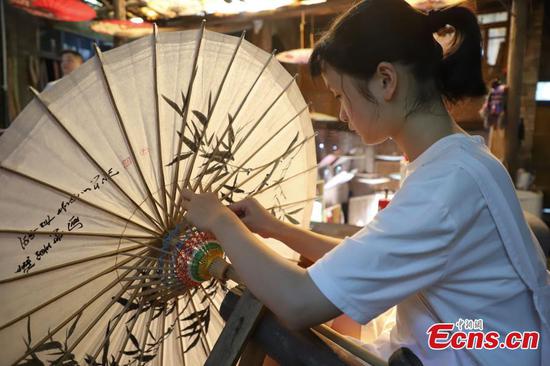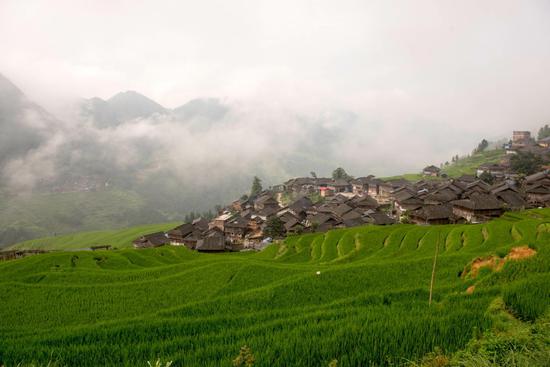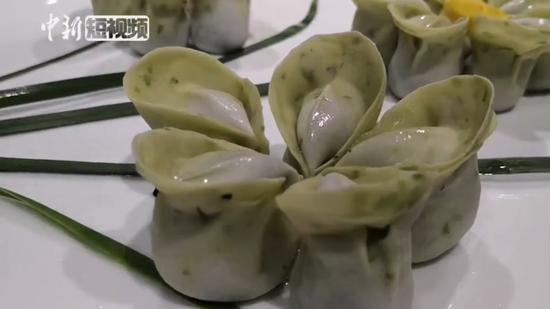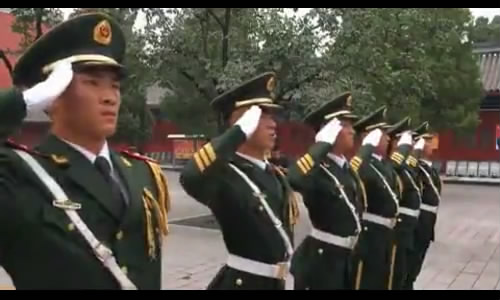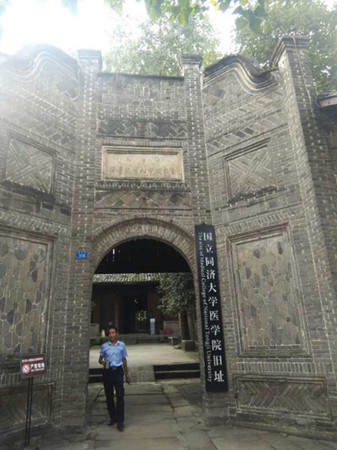
The site of the Medical College of National Tongji University in Lizhuang town in Yibin, Sichuan Province. (Photo by Huang Zhiling/China Daily)
Its streets and lanes retain the layout and original construction style of the Ming and Qiang dynasties (1368-1911).
The streets and lanes attain their old names, such as Scholar, Well, Sheep and Mat streets. With their width ranging from 2 to 6 meters, they are mainly paved with slab stones. In the Well Street, local residents still use the two wells dug some 100 years ago.
Lizhuang boasts many ancient temples and ancestral halls housing valuable cultural relics.
On the 24 window bars of the main hall of the more than 200-year-old Ancestral Hall of the Zhang Family are 48 carved cranes. There are two cranes on each window bar.
The cranes have different postures and there are no repetitions. They are either spreading their wings, or flying, or kissing.
In addition to its ancient buildings, Lizhuang is known for the influx of famous research institutions and institutions of higher learning during the War of Resistance Against Japanese Aggression (1937-45) to seek shelter from the war.
The institutions, which included the National Central Museum and National Tongji University, did not leave Lizhuang until the war was over.
The town also attracted famous scholars, such as Liang Sicheng and his wife Lin Huiyin, experts in architecture.
During their six-year-stay in Lizhuang, the couple visited most of the ancient structures in Sichuan.
With Lin's help, Liang compiled the "History of Chinese Architecture," the first book of its kind in China.
The former residence of the couple, who highly praised many ancient structures in Lizhuang, can be found in the town.















